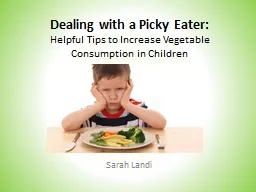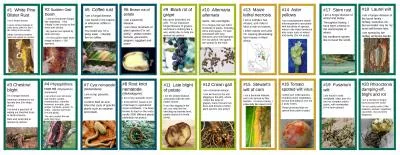PPT-Dealing with a Picky Eater:
Author : lindy-dunigan | Published Date : 2016-06-25
Helpful Tips to Increase Vegetable Consumption in Children Sarah Landi What is a Pick Eater A picky eater is characterized as an individual who Consumes a limited
Presentation Embed Code
Download Presentation
Download Presentation The PPT/PDF document "Dealing with a Picky Eater:" is the property of its rightful owner. Permission is granted to download and print the materials on this website for personal, non-commercial use only, and to display it on your personal computer provided you do not modify the materials and that you retain all copyright notices contained in the materials. By downloading content from our website, you accept the terms of this agreement.
Dealing with a Picky Eater:: Transcript
Download Rules Of Document
"Dealing with a Picky Eater:"The content belongs to its owner. You may download and print it for personal use, without modification, and keep all copyright notices. By downloading, you agree to these terms.
Related Documents














